As businesses strive to meet consumer expectations, speed has become a top priority. However, when speed is the sole metric for success in software delivery, teams risk losing sight of business value. And while engineering metrics like deploys, story points, and velocity are incredibly important, what ultimately matters to the business are things like revenue, conversions, reliability, and costs.
At LaunchDarkly, our vision for feature management has always been to help our customers deliver software faster with less risk. As we grow, we continue to invest in new ways to help our customers not only minimize risk, but also measure and maximize business value with every feature release.
Our 2023 winter release updates are no exception. From the release of custom contexts to the approvals dashboard, LaunchDarkly customers can continue to move quickly, with minimal risk and even greater control over feature releases than ever before.
New release spotlight: expanded targeting with custom contexts
Last quarter, we announced our plan to release an early access program (EAP) for custom contexts. We are excited to reveal that custom contexts are now generally available for all LaunchDarkly customers.
Today’s industry standard for targeting is limiting. It relies solely on targeting “users,” which makes the assumption that all application consumers are human users. This not only limits how organizations conduct targeting, but it also makes it hard to control and measure releases in a way that makes sense to their unique business.
For example, with traditional user targeting, an organization could only deliver a custom experience by configuring rules to target a user and that user’s configuration.
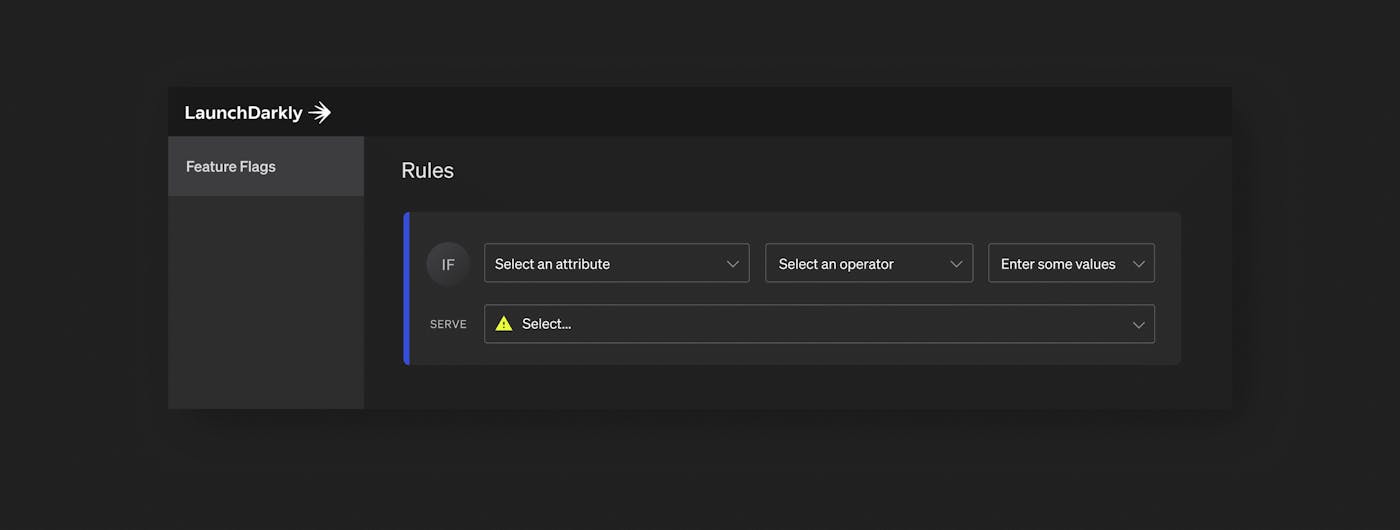
However, because user targeting is based solely upon the properties and configuration of a user, things like non-user targeting and multi-layer targeting can become quite complex and even make it impossible for organizations to deliver targeting in the way they want.
Now, with custom contexts, organizations can move beyond targeting individual users and instead create multiple, top-level targeting objects. These object types can meaningfully map to a business’s specific use case—be it devices, organizations, stores, locations, or anything else you can imagine.
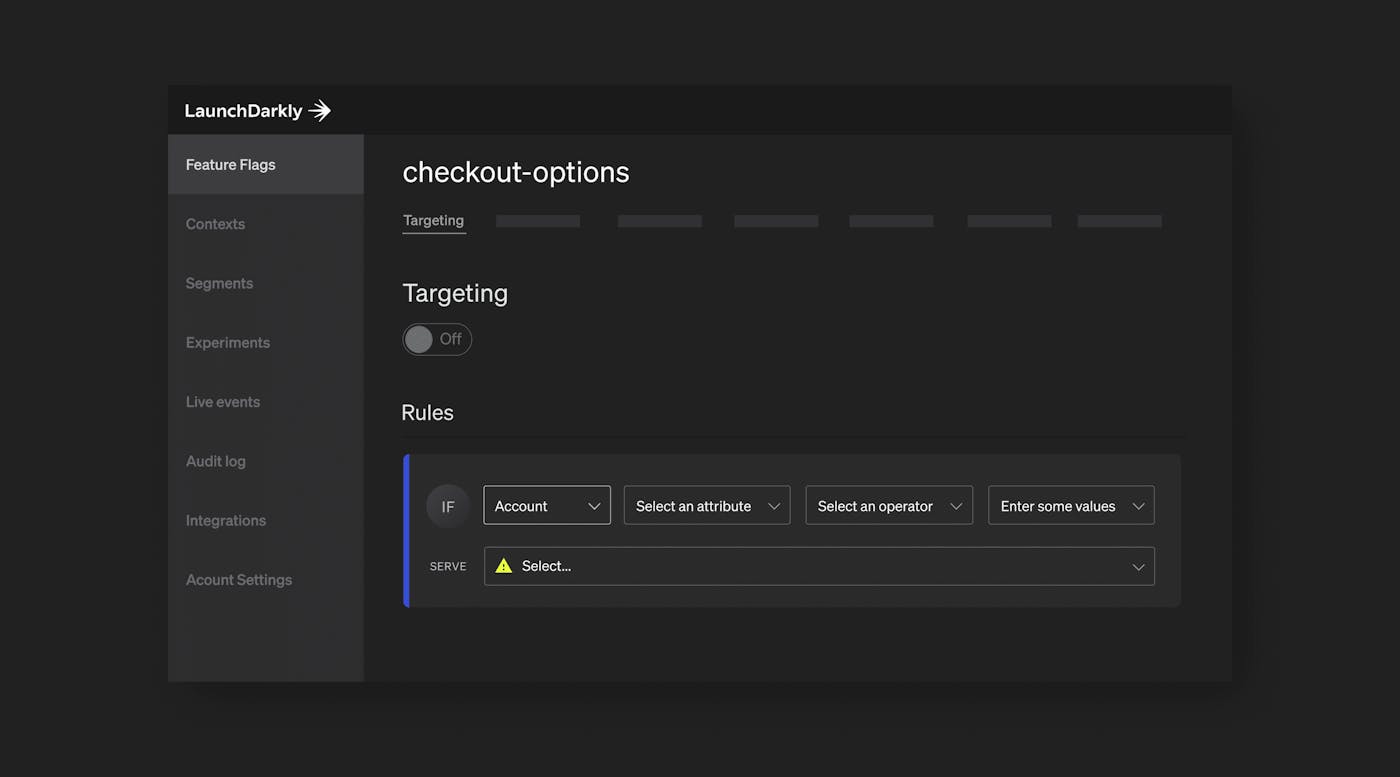
This not only unlocks new opportunities for organizations to deliver targeting how they want, but it also offers greater control and business alignment for how features are delivered.
In addition, with the new contexts dashboard, LaunchDarkly customers can now easily visualize what feature variation is being delivered to a consumer.
Check out our custom contexts deep-dive blog post to learn more.
Experiment with unparalleled control
The rollout of custom contexts also creates many new use cases and opportunities for LaunchDarkly Experimentation customers.
First of all, you are no longer limited to targeting users and their attributes as the sole audience for experiments. Now, you can construct rules and build experimentation audiences based on different context types. This offers more control and granularity to target experiments based on organizations, locations, and more.
Additionally, experiments focused on a traditional user audience can pose unique challenges as unknown users make it hard to run and maintain randomization. Custom contexts greatly expand the possibility to randomize experiments on a myriad of known variables such as device type, browser type, and more. This keeps the experiment stable and eliminates randomization discrepancies caused by traditional user targeting.
Approvals dashboard
Another inhibitor to delivering features at pace is complex change management. While change management and, in our case, flag approvals, are essential to minimizing risk, ensuring compliance, and shipping high-quality products, they can also delay features from releasing in a timely manner.

In an effort to help our customers better track and manage approvals, we have released an approvals dashboard. Customers can now easily visualize all approvals in a singular dashboard, with options to sort and filter by:
- necessary approver
- approval requester
- project status
- approval status
With a singular location to manage approvals, LaunchDarkly customers can now quickly locate, manage, and complete all their approvals across feature flags.
Learn more about our approvals dashboard in this blog.
Updated notification settings
LaunchDarkly notifications are crucial for staying up-to-date on flag changes, approval requests, and more. But too many notifications across multiple channels can cause alert fatigue. In order to better streamline and manage notifications in LaunchDarkly, we have rolled out dedicated notification settings that you can manage from your personal profile.
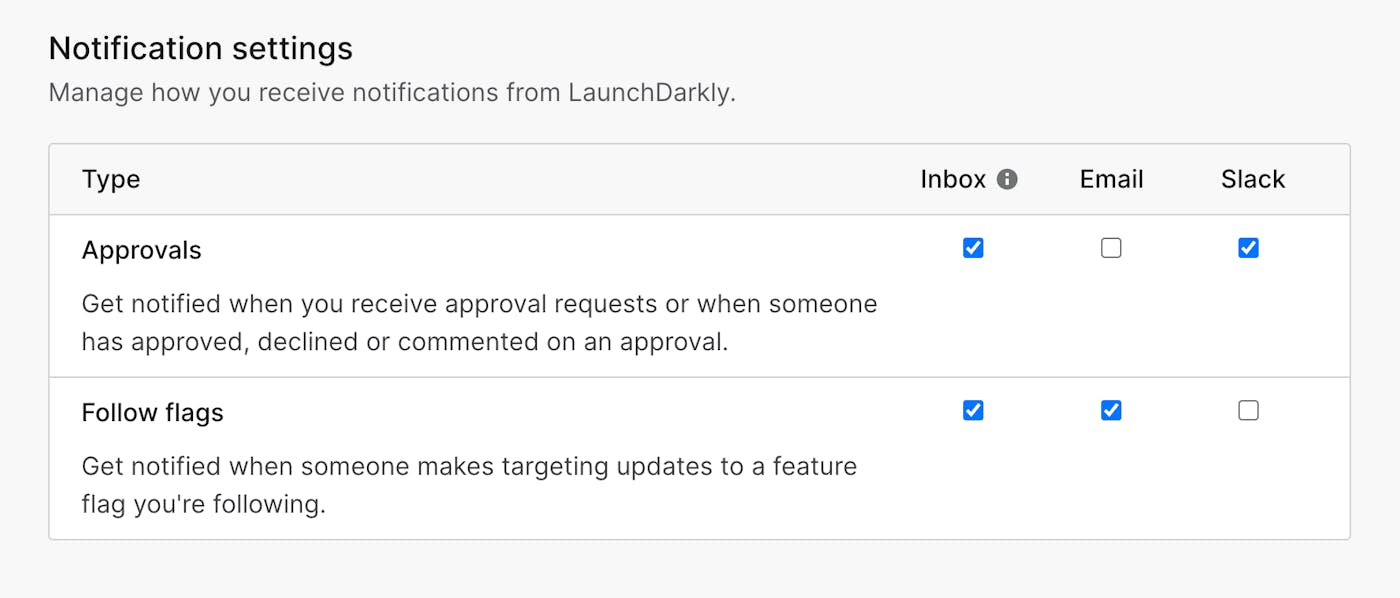
Now, within LaunchDarkly, customers can control what notifications they’d like to receive (i.e flag updates, approvals) and how they’d like to receive them (i.e. in-app, Slack, Microsoft Teams, or email).
Check out how to update your notification settings here.
Native integration with Microsoft Teams
Customers can now receive LaunchDarkly notifications in Microsoft Teams. You can now receive personal flag update notifications in real-time, associate chat messages with a flag via flag links, create and subscribe to channels that push flag update notifications, and get notified of approval requests right from within Microsoft Teams.
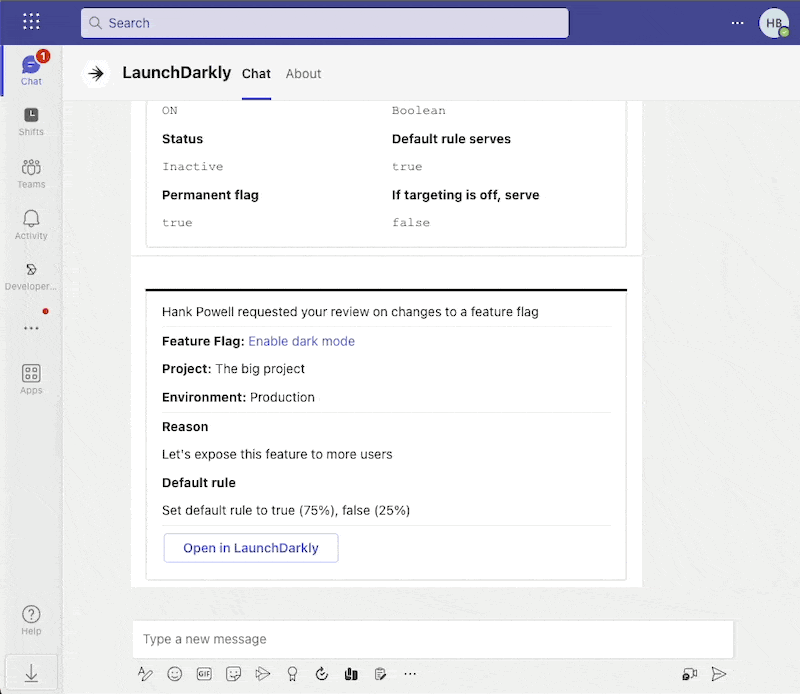
Set up your Microsoft Teams configuration today.
New RUM integrations for Datadog and AWS users
As we continue to find ways to drive business value, we are excited to offer RUM (Real User Monitoring) integrations to provide greater insights into flag variations.
Datadog customers can now enhance their RUM data with feature flag data from LaunchDarkly. This integration enables greater visibility into which specific flag variations end-users are experiencing and how those variations may be impacting overall engagement and application performance.
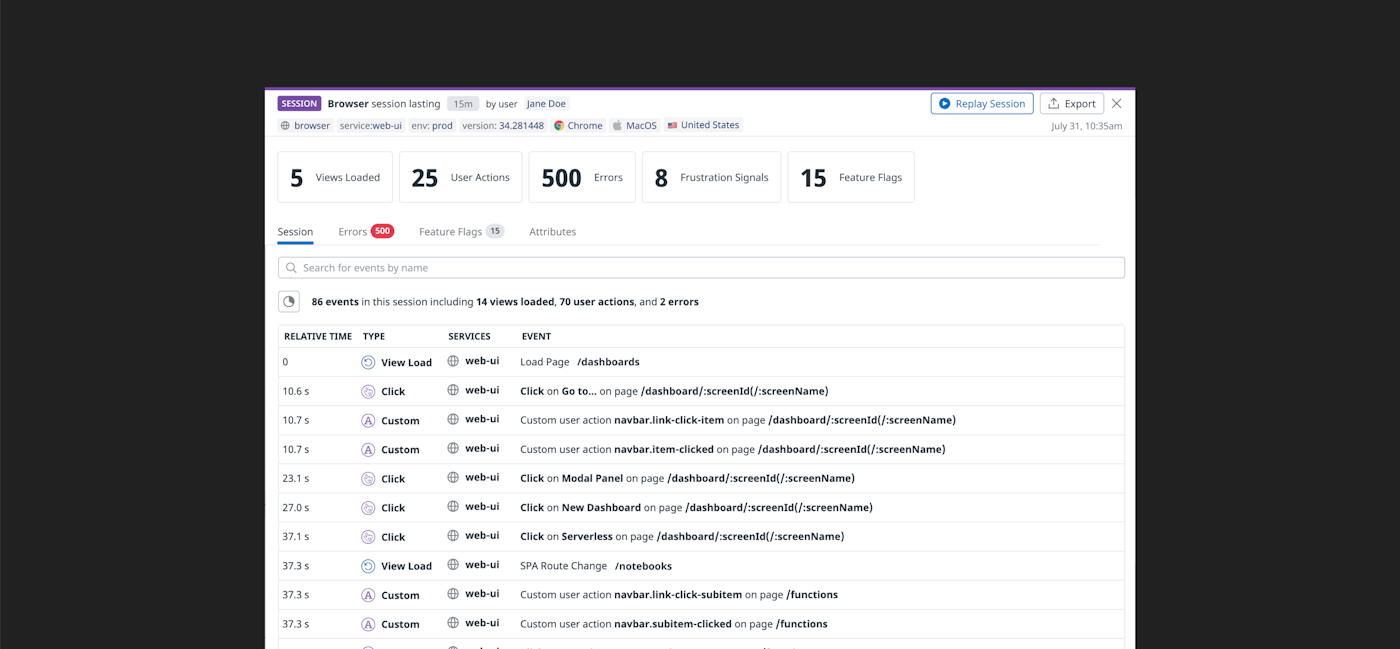
Additionally, with the LaunchDarkly AWS CloudWatch RUM integration, you can now configure flag data as a custom event to be recorded in CloudWatch RUM. Not only does this help you further analyze and understand application performance in near real-time, but it also provides insights into what flag variations are being served.
Assign a team as a flag maintainer
Before, only an individual member could be assigned as a flag maintainer, making flag health and accountability challenging. Now, teams can collectively be assigned as a flag maintainer. This makes it easier to identify flag owners, with the ability to filter the flag dashboard to flags maintained by teams, and further promotes flag accountability.

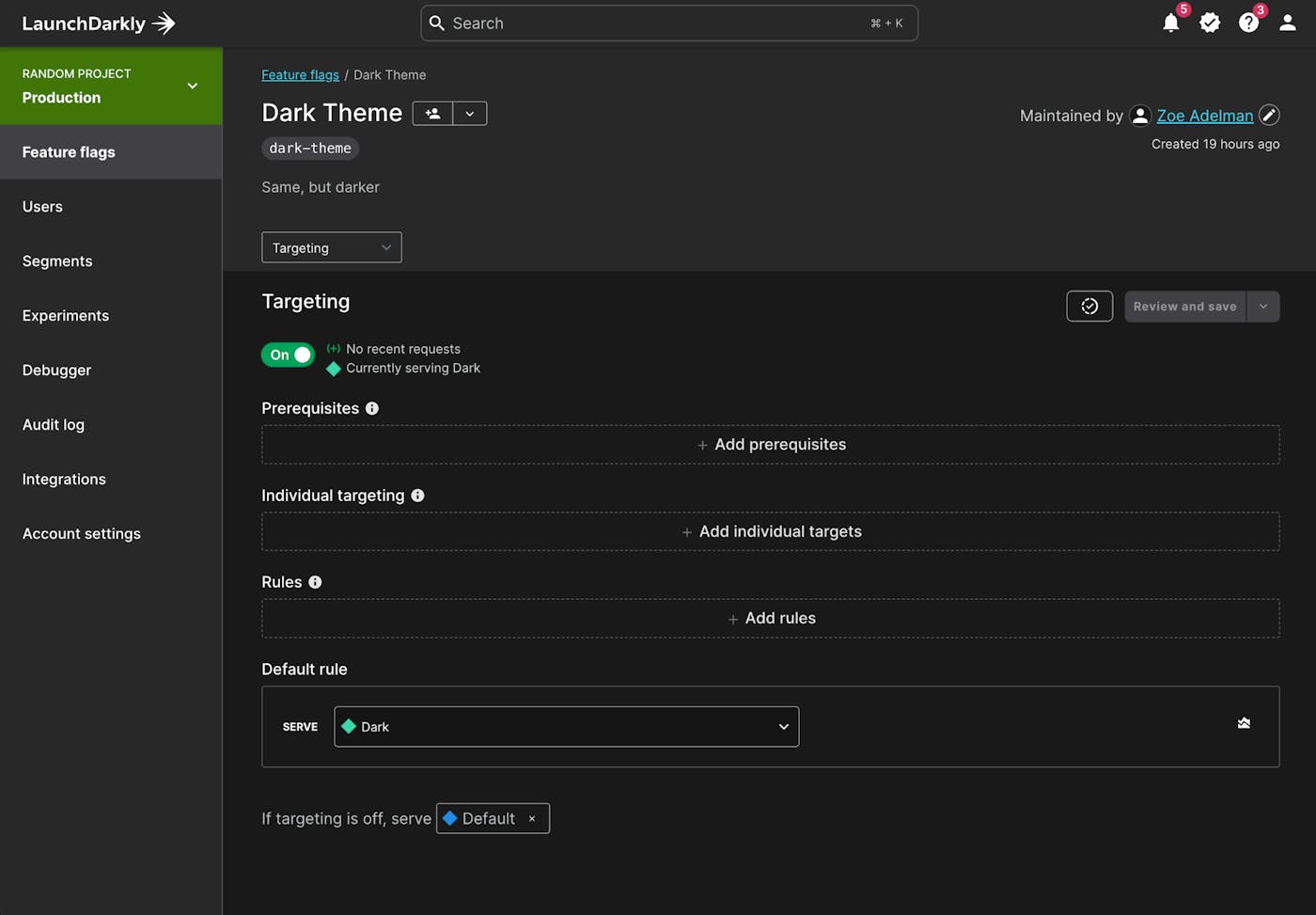
LaunchDarkly achieves FedRAMP authorization
In January, we announced that LaunchDarkly Federal became the first feature management platform to achieve the Federal Risk and Authorization Management Program’s (FedRAMP) authorization to operate. With this authorization at the moderate impact level, government agencies and their commercial partners can leverage the Federal instance of our feature management platform to safely and securely deliver software and modernize applications with exceptional control.
Learn more about LaunchDarkly’s FedRAMP-authorized instance.





